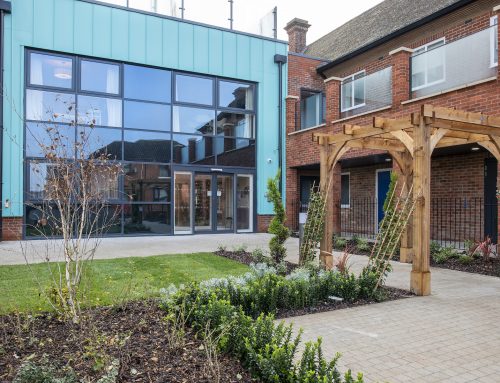Alternative Investment Opportunities – Rynda Property
Article by Michael Walton, CEO of Rynda Property
The significant broadening of the institution’s real estate investment universe is a welcome feature of recent years. Colliers Property Data shows that alternatives’ share of total UK real estate has risen tenfold to 20% over the period 2000 to 2021. The care home submarket of the alternatives’ genre is one of the most active.
Alternative sectors are operationally specialist and idiosyncratic, so it is important that investors and their asset manager recognise this in a flexible and open approach to ownership. It is important to not carry years of imbedded caution and long followed investment and asset management practises into the alternatives sectors that will stifle its innovation and dynamism to the detriment of investment performance.
Let me highlight where institutions could further embrace the alternatives’ sector to their benefit having initially made some comments on the sector.
Alternative sectors by their name and nature are new and entrepreneurial. Twenty years ago, in the UK there were very few purpose-built care homes or student accommodation blocks. There was no build-to-rent market on large scale assets and solar parks were unheard of. Today’s operators of these assets were beginning to make tentative business plans in the early 2000’s to exploit these opportunities and could only dream of the scales of these markets today.
The operating businesses in these sectors often have immature capital structures pregnant with founder capital or private equity investment. Long-term patient capital is keen to enter the space but is having to wait for founders to cash-out or private equity to exit. Change to these pioneer businesses will come as industries mature and over time significant players emerge and smaller niche business prosper often at the expense of middle ground participants. Advisers and suppliers to these industries must also change their business models and capabilities to reflect the evolution.
Let me now provide a couple of examples of where institutions could benefit from increased flexibility in the care sector.
Firstly, let’s consider UK private pay dementia care that generates such a significant part of care homes income for institutional landlords. Having spent time in continental Europe researching this market it is clear that several successful operators adopt a very different model to the norm in the UK. For instance, the average size of new Continental European dementia care homes is smaller than in the UK and the building layout is vastly different. Continental European operators have evolved building design putting dementia patient’s requirements at the heart of the specification whereas UK operators (perhaps driven by regulatory care requirements) appear to adopt designs for ease of management. For example, UK homes often have a central catering facility whereas several continental operators have many small kitchen facilities spread throughout the home in which dementia patients are encouraged to participate in food preparation. UK homes tend to have straight corridors so doors can be monitored from strategically located nursing stations whilst continental operators have irregular corridors that are intrinsically easier for patients to navigate. There is growing evidence that building design coupled with greater engagement of residents explains why some operators in Europe have patient longevity twice that of more traditional operators.
If institutional investors only accept the tried and tested operating models in “institutionally acceptable” assets new entrants with new models would struggle to gain acceptance to their new building designs. Both long term return performance and patients will miss out if investors do not show some flexibility in building specification.
Secondly, institutional focus has been on new best in class purpose-built assets with strong ESG ratings. Whilst these homes are attractive to residents and care provision is usually excellent, they represent a thin “icing” layer of the entire care home market. Given the competition to own these assets better value should be considered in the “best of the rest” sector. Not only is this part of the market larger but its price point to residents is often some 35-45% less potentially providing more resilience in the long term as generational housing equity (that traditionally funds care home fees) reduces. Whilst not accepted by many institutions it can be argued that the best deployment of their funds for ESG impact is not buying new highly rated ESG assets but helping fund ESG upgrades as part of lease regears with operators of these assets.
Thirdly, institutional capital should actively consider taking equity positions in the operators of the alternatives sector rather than just seeking real estate exposure. These sectors are emerging and business models are not fixed so inherent in the real estate risk is operator’s business model risk. Recognising that acquiring real estate in these sectors is providing operators off-balance sheet debt (in return for the lease liabilities) any investor is disproportionately exposed to the operator’s business model as compared to the traditional sectors. As such, to balance this risk, investors should seek an equity share in the operator for this early-stage investment.
Whilst recognising it will be difficult to secure these equity positions in the recent bull market, the new market dynamics from the second half of 2022 will give investors a better chance to secure them. The withdrawal of most debt lenders and many investors from these alternative sectors has tipped the negotiation balance away from vendors and operators and this should continue well into 2023.
Read our article on pages 40 -41 in the Property Chronicle Spring 2023: Property Chronicle Quarterly – Spring 2023 – The Property Chronicle
Michael Walton is a chartered surveyor with over 36 years’ experience in the European real estate investment markets. He founded Rynda Property Investors in 2005 and invests with clients in a variety of real estate strategies across north-west Europe. To find out more about our services at Rynda Property, get in touch with one of our experts via our contact form or call +44 (0) 20 3709 9875.





